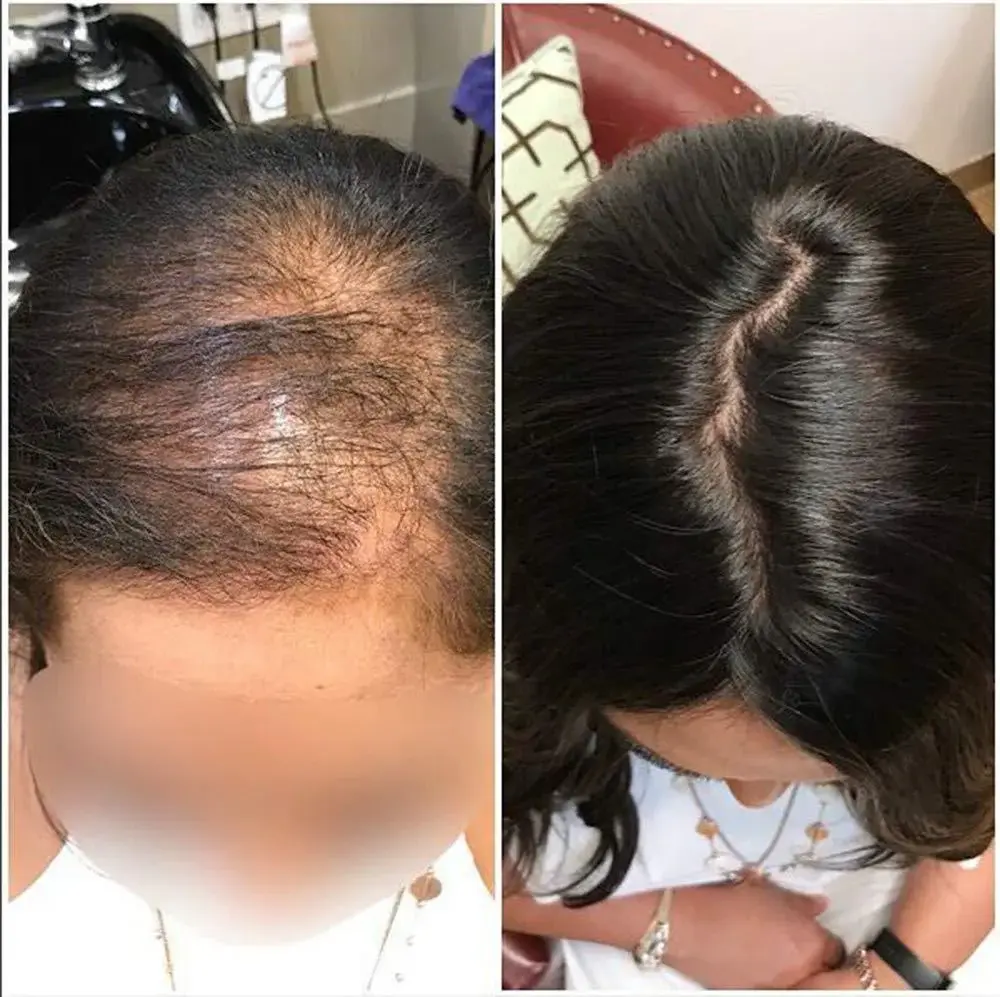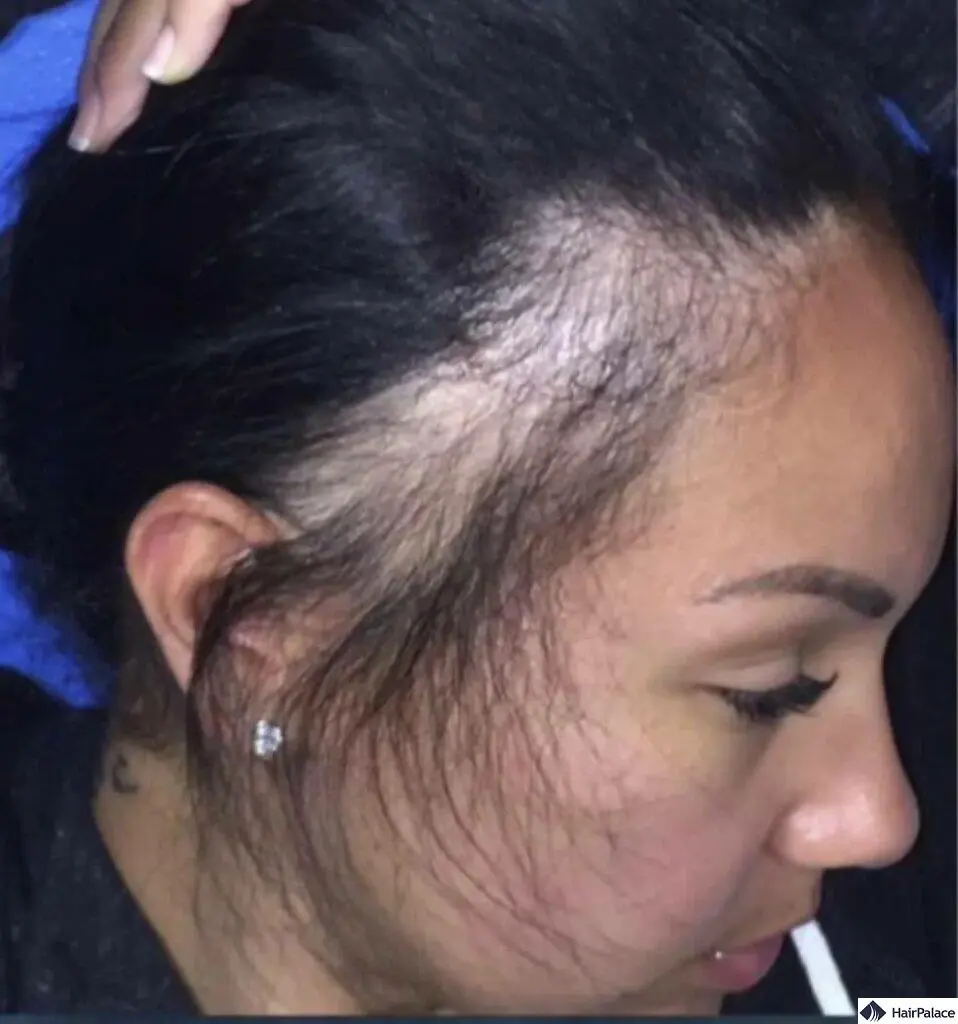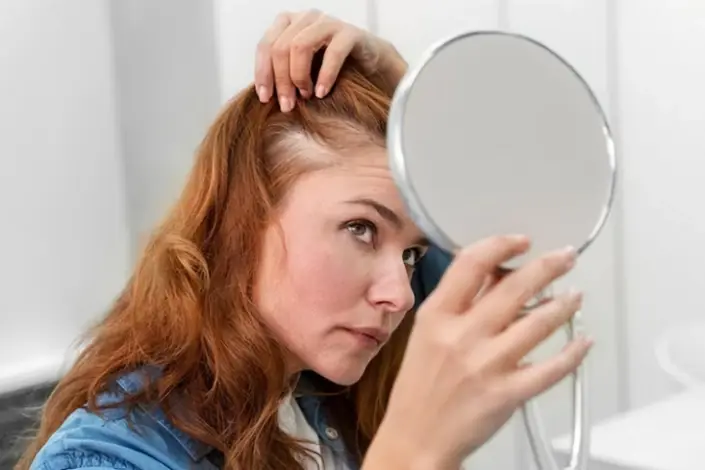Most female hair transplants show a success rate between 85% and 95%. This number depends on the donor area, hair type, and follow-up care. When these steps are done well, the transplanted hair grows naturally. Results come from medical skill, not shortcuts.
Key Takeaways
- The female hair transplant success rate ranges from 85% to 95%, and results depend on donor area quality, proper diagnosis, and expert medical oversight for female patients.
- Most growth appears between six and eighteen months, and transplanted hair remains long-lasting when supported by healthy scalp habits after the surgical procedure.
- Common conditions like female pattern baldness, androgenetic alopecia, and traction alopecia can respond well to transplantation when the donor zone is stable.
- Choosing regulated clinics in countries like Greece and Israel offers safer outcomes than low-cost markets, helping protect the donor area and ensuring natural hairline design.
Female Hair Transplant Results & Timeline
The transplant grows in phases. Shedding in the first few months is a normal. Growth becomes visible after six months. Final density appears between twelve and eighteen months.
Growth timeline:
- Months 1–3: shedding and healing
- Months 4–6: first signs of growth
- Months 7–12: stronger hair coverage
- Months 12–18: full results
Female Hair Transplant Success Rate by Age
The success rate of female hair transplants varies by age, as hormones and hair patterns change over time. Younger women may experience ongoing loss, making results less predictable.
Women between 30 and 50 often have more stable outcomes. A doctor can check which group you fit into.
Before and After

Before and after photos help women see realistic results from a hair transplant. These images show changes in density, shape, and balance, which can improve confidence and styling options.
When reviewed side by side, patients can understand how transplanted hair blends with native strands over time. Lighting, camera angle, and hairstyle are kept consistent to provide a clear comparison.
These examples also show how natural hairlines are designed for female patients, focusing on softer curves and lighter density near the edges.
Subtle improvements often look more natural than aggressive changes, especially in cases of female pattern baldness. Women can use these photos to picture how their own results may appear after the full growth cycle.
Overall, these comparisons offer helpful guidance for setting realistic expectations.
Hair Transplant Female Celebrities
Some female celebrities have talked about dealing with hair loss. Their stories can give confidence to other women. Demonstrate that hair loss is a common and treatable condition. Honest discussions also reduce stress and fear.
Longevity and Long-Term Durability
Some female celebrities have talked openly about dealing with hair loss and their decision to explore medical options to restore density.
Their stories offer reassurance to other women by showing that hair thinning is not unusual and can happen at any age.
These public discussions help normalize treatment, reduce fear, and create space for honest conversations about female pattern baldness, styling limits, and confidence.
When women see successful outcomes from trusted doctors, they often feel more comfortable asking important questions, including “is female hair transplant permanent” and how long the results can last.
Impactful benefits from celebrity transparency include:
- Reduced stigma, helping women feel safe asking for help
- Increased awareness of medical treatments that create real change
- Encouragement to avoid unregulated clinics in risky markets
- Better trust in physician-led treatment planning and supervision
These examples also show how natural a surgical procedure can look when performed with proper technique.
As more public figures speak about the process, female patients gain relatable guidance and realistic expectations about recovery, long-term durability, and hairstyle freedom after growth.
Pain, Recovery, and Comfort
Local anesthesia reduces discomfort during hair transplant surgery. Most women feel mild soreness for one or two days. Swelling may appear on the forehead but fades quickly. Clear instructions help you rest and heal.
Basic aftercare steps:
- Sleep with your head raised
- Wash gently as instructed
- Do not scratch the scalp
- Avoid direct sun exposure
Regret Rate and Satisfaction
The regret rate is low when the procedure is handled by trained doctors. Many problems happen when women visit unsafe clinics, especially in Turkey, where rules are not strict.
Poor work can cause scars or unnatural hairlines. Regulated clinics in Greece and Israel offer better oversight and support.
Factors That Affect Success
Success depends on a correct diagnosis, a strong donor area, and healthy skin. Female pattern hair loss and androgenetic alopecia respond well if the donor region is stable.
Traction alopecia also improves when pressure is removed. Good treatment planning prevents weak growth later.
Donor Area Density

The donor area must be thick enough to supply grafts. Women with a thin or bald donor region may need other treatments.
The hair transplant woman’s cost donor area review helps estimate how many grafts are possible. Doctors protect the donor zone to avoid damage.
Alopecia Type and Hormones
Hormones can affect shedding patterns and the speed at which hair loss appears. Some alopecia types progress faster than others, especially when hormone levels shift due to age, stress, or medical conditions.
For example, androgenetic alopecia can continue to advance if not monitored by a doctor, which may impact future density.
Medical support can slow this process down and protect the native hair surrounding transplanted hair, helping create a balanced look over time.
Different alopecia types respond in unique ways:
- Androgenetic alopecia often benefits from ongoing medical therapy
- Traction alopecia improves when tension and pulling are reduced
- Hormone-related thinning may require supportive medication
- Diffuse thinning needs a careful diagnosis before any surgical procedure
Adding therapy can keep native strands strong, reduce future miniaturization, and support better long-term durability. Regular checkups help track hormonal changes and prevent unnecessary shedding during the growth cycle.
FUE vs. FUT for Women
Two common techniques are follicular unit extraction (FUE) and follicular unit transplant (FUT). FUE removes small groups of hair one by one leaving tiny dot scars.
FUT removes a thin strip and can offer more grafts, but leaves a narrow line. Doctors choose based on donor area strength and hairstyle needs.
Who Is a Good Candidate?
@trichogenics Hair transplants in women are a little bit more complicated. We always want to aggressively treat pattern hairloss before attempting surgery. Always exhaust medical therapy first before jumping into an irreversible surgery. #hairtransplant #femalehairtransplant #femalehairloss #hairtransplantturkey #minoxidil #finasteride #spirinolactone
♬ original sound - Trichogenics
Good candidates include women with stable hair loss patterns. Women with a receding hairline can also benefit. A doctor reviews medical history, family patterns, and lifestyle. Patients must follow aftercare instructions to protect the new hair.
Common signs of a good candidate:
- Localized thinning
- Strong donor area
- Realistic goals
- Good scalp health
Female Hair Transplant Cost
The cost of a female hair transplant can vary based on the graft count, the doctor’s experience, and the clinic’s quality. Advanced equipment and trained staff support better results.
Cheap options often reduce medical supervision. In Turkey, many clinics allow non-doctors to perform parts of the hair transplant procedure, which increases risk.
Cost Ranges for Women
Most women need 1,500 to 2,500 grafts. Prices vary based on clinic location. At Trichogenics, cost is based on medical need, not volume sales. You will receive a clear estimate during the consultation.
Cost Factors
Costs may include:
- Donor area strength
- Selected technique
- Surgery time
- Aftercare products
- Support therapy
Investing in trained physicians increases safety.
How to Improve Success
Women can improve their success by caring for their scalp and avoiding damage. Tight hairstyles can cause traction alopecia. Topical treatments may support nearby native hair. Checkups monitor long-term growth.
Helpful tips:
- Avoid heavy tension on hair
- Reduce heat styling
- Use mild shampoo
- Protect scalp from UV light
Risks, Limits, and Safety
Hair transplants are safe when done by trained doctors. Minor risks include swelling, redness, or delayed growth. Problems often occur in places with weak laws, such as Turkey. Overharvesting can harm the donor area permanently.
Medical Review and Credentials
Trichogenics focuses on safe hair transplant surgery with proper medical control. Dr. Asi Peretz reviews complex cases related to hair loss in women. Our clinics in Greece and Israel follow medical laws. This protects patients and improves long-term results.

Sources and Data Methodology
Success data comes from clinical records, medical research, and patient follow-ups. Doctors study donor density, hair growth cycles, and hormone balance.
This information helps predict long-term outcomes. Good recordkeeping improves accuracy.
Short Educational Context
Hair grows in cycles. Shedding is expected and not a sign of failure. Over time, hair thickens and blends with native strands. Patience is part of the process.
Hair transplants require stable donor hair to grow well. Transplanted hair keeps the qualities of the donor zone. This protects it from future thinning.
Many women travel to Turkey for low prices, but poor control can damage the donor area. Correcting these mistakes usually incurs additional costs later.



